Save our Bogs! Culture, Conservation and Climate Action in Ireland’s Peatlands
Characterized by long-term accumulation under waterlogged conditions, peatlands exist on every continent and account for 3-4% of the global land surface.
Small but mighty, these often overlooked wetland environments are estimated to hold as much as one-third of the world’s organic carbon in their soil—twice the amount found in the entirety of the Earth’s forest biomass.
While healthy peatlands can trap and store carbon, regulate water, and provide important habitats for rare species, human alteration has disturbed peatland carbon and nitrogen cycles on a global scale.
Approximately 12% of the world’s peatlands have been drained and degraded through conversion for agriculture, forestry, infrastructure development, and other uses.
Peatlands continue to be lost at alarming rates–three times faster than forests–and they are now hotspots of greenhouse gas emissions, estimated to account for around 10% of global annual carbon dioxide emissions.
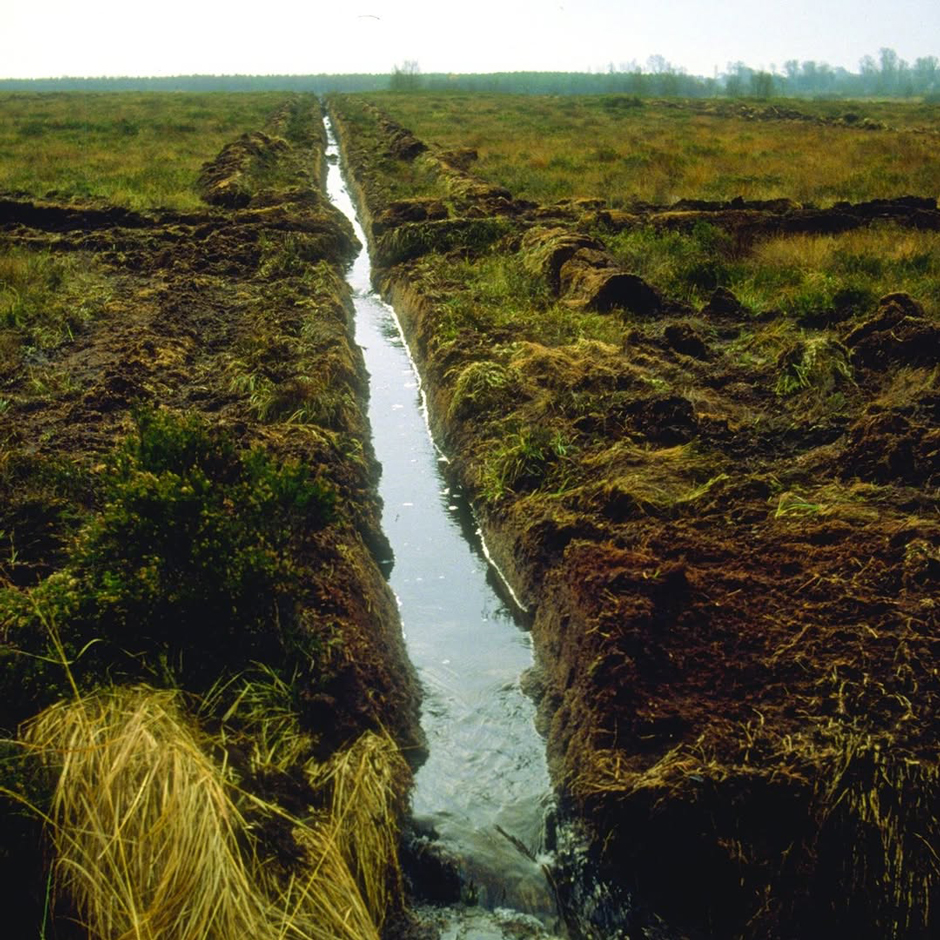
A drain running through a bog. Loss of water shrinks the peat and contributes to drying, which increases carbon emissions. As the bog dries, non-peat-building flora proliferate. (Credit: IPCC)
Mapping and Monitoring Peatlands
Peatland restoration is considered “low hanging fruit” and a viable option for mitigating climate change. Consequently, policy and conservation efforts are gaining traction.
For example, the European Union (EU) Nature Restoration Law came into force in 2024, and sets binding targets to restore degraded ecosystems, including peatlands. 88% of countries are signatories to the Ramsar Convention on Wetlands and committed to the 2016 IUCN Resolution on peatlands.
A vital first step in managing peatlands is understanding their extent and condition. Scientists have highlighted that these unknowns hinder the development of national policies and restoration efforts.
Bogs in Ireland
Founded in 1982, the Irish Peatland Conservation Council (IPCC) is based at the Bog of Allen, 35 miles west of Dublin.
The IPCC aims to conserve a representative sample of Ireland’s peatlands for future generations and is contributing to the monitoring and scientific understanding of these ecosystems.
Peatlands cover approximately 21% of Ireland, but up to 85% have been degraded by human changes in land use. Commonly called “bogs” (from the Gaelic word for soft), they hold deep social and cultural significance.
Tristram Whyte, Policy Officer at the IPCC, explains that “there are three main peatlands in Ireland–raised bog, blanket bog, and fen.”
At the end of the last Ice Age, lakes formed in the midlands, where material accumulated without decomposing, creating fen habitats. “This layering of plant material eventually rose above the surrounding landscape to form raised bogs, which are about 10,000 years old,” says Whyte.
“Once you have the fen habitat, if the sphagnum mosses–brown mosses–move in, they cap off the fen and it starts to rise above the surrounding landscape. These raised bogs are about 10,000 years old,” he states.
A dry period 4,000-5,000 years ago halted peatland growth, and Ireland had almost complete tree cover. “Then it got very wet again, and the bogs started to grow. The trees fell over, the landscape became more open again,” he continues.
This cycle repeated twice. Increased rainfall pushed minerals down the mountains, creating an iron pan that allowed blanket bogs to begin forming on the mountains.
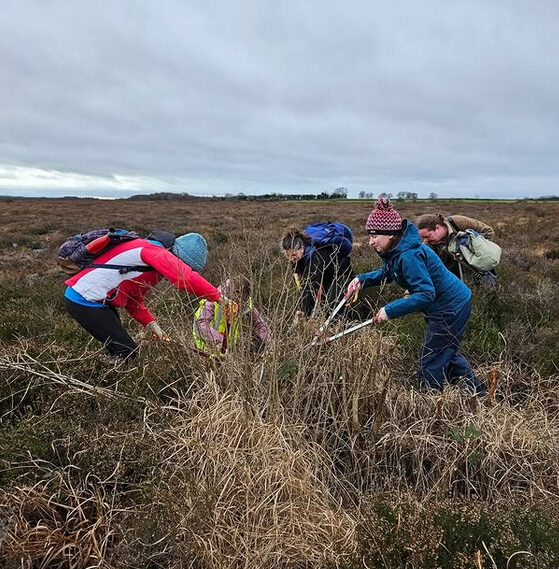
Volunteers help to remove invasive species from the bog. Invasive species limit light and block rainwater from reaching the peatland surface, which can result in the loss of native peat-forming plants and the loss of important habitats. (Credit: IPCC)
Culture and Perception of Bogs
Peatlands in Ireland are fundamental to cultural identity and have provided shelter and fuel for centuries.
“We’re obviously about protecting bogs,” says Whyte, “but we have to acknowledge their historical significance. When the Irish state was formed, it was the least forested country in Europe. Peat provided fuel for people when there wasn’t anything else.”
Peat was so crucial that the sale of most houses included a “bank of a local bog” to be cut specifically for domestic use.
Whyte recalls “drawing the turf to burn in the house” during childhood summers spent in rural Ireland. Despite this, he notes, “There’s actually quite a fear of some of the bogs […] They were seen as wastelands–only valued for what was beneath the surface, not what was living on them.”
Peat has also been commercialized. After the Second World War, state-owned Bord na Móna was tasked with extracting peat to “fuel the power stations, provide jobs and a medium for commercial selling.” This developed into a global industry, but today, Bord na Móna is more focused on peat conservation than cutting.
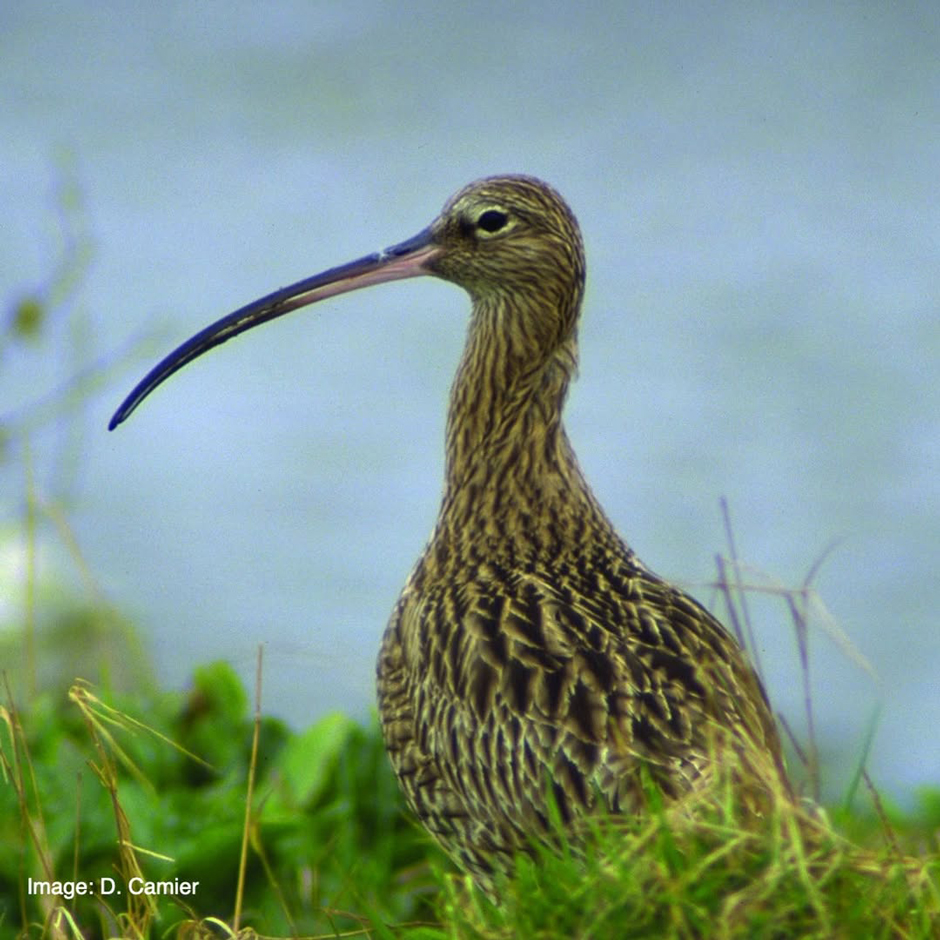
The Eurasian Curlew (Numenius arquata; Crotach) is Ireland’s largest wader, with a streaky grey-brown body and a long downwards curved bill. Winter visitors arrive at coasts and wetlands. They breed on bogs or rough grasslands and mainly feed on invertebrates. Their iconic bubbling call of “cur..lee, curl..lee” is not as familiar as it once was–the Curlew is now an endangered and red-listed species in Ireland. (Credit: D. Camier / IPCC)
Restoring Peatlands
Using a designated Protected Bog Purchase Fund, the IPCC purchases bogs, assigning them for protection, education and, where possible, restoration. Currently, it owns and manages six bogs across five counties.
Peatlands grow very slowly, at rates of around 1mm a year–part of the reason why continued extraction, even for domestic use, can be so damaging. Whyte observes, “The condition of peatlands in Ireland is that less than 0.1% of raised bog is actively growing.”
The IPCC manages a database of 1,150 peatland sites. From this, Whyte estimates that “only about 25% of peatlands are in a conservation worthy condition.”
“This means you might be able to rehabilitate it in terms of mitigating climate change impacts, but restoring it back to a raised bog probably isn’t possible,” he adds.
Bog cores provide a snapshot through time of habitat and vegetation, with the latter enabling estimations of carbon storage. At Lodge Bog, the IPCC estimates that their 30-hectare site holds the carbon equivalent of 65,000 annual car emissions.
Indeed, Irish bogs store an estimated 2,216 Mt. of carbon–equivalent to around 35 years of current national carbon dioxide emissions.
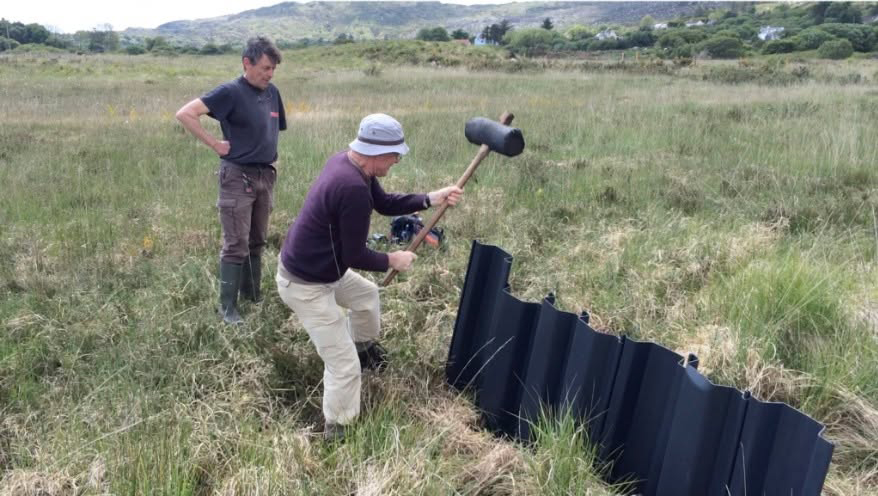
Drain blocking raises the water table so that peat formation can continue. Peat dams are the cheapest and most commonly used type of dam, but they are not completely impermeable and heavy machinery can damage the fragile bog surface. Plastic drain piling is a good alternative to peat as it is light and easy to transport. (Credit: IPCC)
The Importance of Monitoring Peatlands
The IPCC’s bog monitoring efforts focus on measuring water and rot on or at the bog surface.
A 20cm leeway in water level is acceptable between the wettest and driest periods of the year. “If the surface is dried, that means the peat is giving off carbon to the air, and it’s also giving off carbon into the water, which is then being drained and going into rivers,” Whyte explains.
Peat and silt drainage into rivers has been catastrophic for freshwater fish like trout and has contributed to the near-total collapse of the inland fishing industry.
“Ireland has actually been brought to court by the World Health Organization because of the amount of chemicals that we put into the drinking water to remove peat. You have to solidify the peat from the water to make it drinkable, but the chemicals are carcinogens,” states Whyte.
The IPCC uses piezometers to measure bog water levels. Relatively rudimentary, these are fashioned with a long acrylic pipe with holes drilled along its length. A pair of tights pulled over the pipe acts as a mesh, so when the pipe is inserted into the bog, water can seep in, but peat can’t. Ploppers–a weight on a string–are used to measure water height in the pipe.
Multiple measurements taken along a transect enable mapping of water height, location, and identification of drains–a vital step in informing management.
For example, 5km of drains were identified at Lodge Bog, degrading an otherwise unextracted bog. The IPCC installed 200 drain blocks by hand, reversing this negative impact.
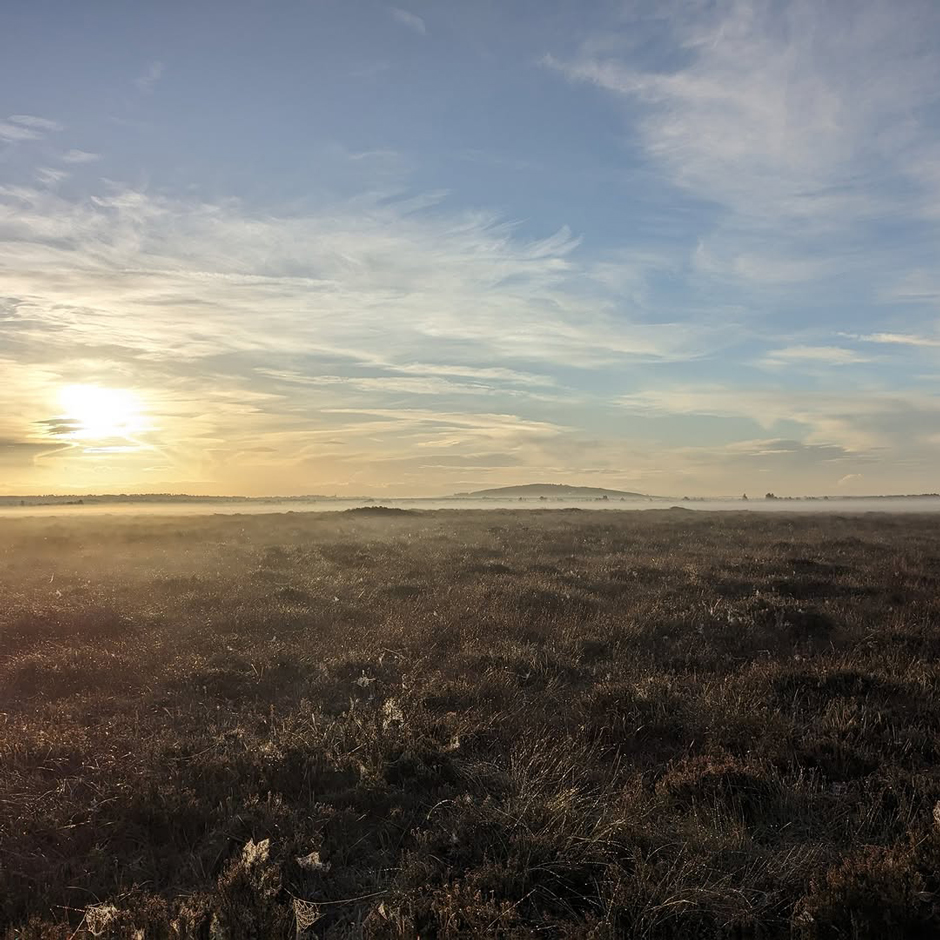
A misty morning at one of the IPCC’s six bog sites. (Credit: IPCC)
Bog Life
“Bogs are nutrient poor,” says Whyte. “They’re very hostile to wildlife–you’ve got low nutrients, high water saturation, and you’re exposed to the elements.” But these “alien” habitats provide a home for rare species, like the carnivorous plants Sundew and Butterwort.
Sphagnum moss can soak up more than eight times its weight in water and is a vital peat-building species.
“Sphagnum moss perpetuates the habitat,” Whyte explains, “it actually releases an acid and it creates a chemical reaction, a hydrogen ion exchange pump, and it’s able to get nutrients back from the peat, but it also means it’s perpetuating the acidity.”
The IPCC’s long-term sphagnum trials assess rates of colonization on bare peat sites. 16 3x4m plots at Lodge Bog were prepared with straw at a variety of locations. Over the last decade, eight of these have become completely covered. Studies like this are particularly important in the context of climate change, as sphagnum is vulnerable to prolonged drought.
Whyte explains that the IPCC also monitors some of the fauna that call the bogs home. For example, it contributed to monitoring of the Marsh Fritillary–Ireland’s only protected butterfly species–and the Large Heath butterfly, which are endemic to raised bogs.
The native Curlew, a wading bird, breeds on bogs between March and August, but its population has crashed by 98% since the 1980s. Fine-scale GIS monitoring of one breeding pair on IPCC-managed Lodge Bog has contributed to national reporting, helping inform conservation.
Whyte emphasizes the importance of peatlands to biodiversity, “About 60% of threatened bird species and 45% of threatened butterflies are peatland species,” he says.
He continues, “Peatlands were 23 or 24% of the habitat in Ireland, but only 25% of that is being conserved. You’ve essentially stopped the ecological functioning of a keystone habitat.”
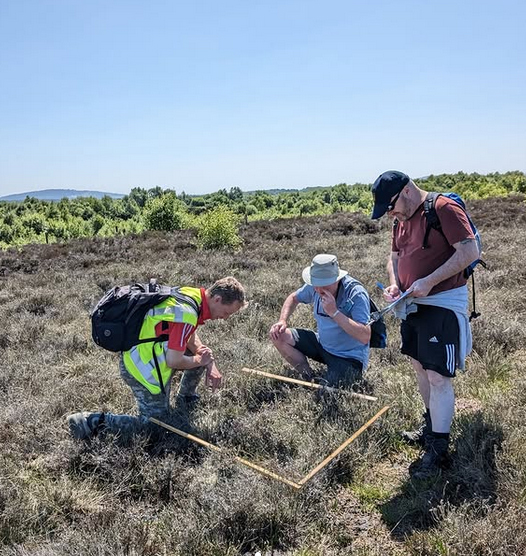
Volunteers use a quadrant at one of the IPCC’s bogs. The IPCC contributes to a range of ecological surveys that help build a better picture of ecosystem and species health. (Credit: IPCC)
The Future of Peat
Since 1950, human-induced climate change has increased the frequency and duration of both drought and heavy rainfall events in most parts of the world. Characterized by near-permanent waterlogging, bogs are vulnerable to changes in hydrological regimes.
Understanding the current state and influence of anthropogenic climate change on peatlands is vital to restoration efforts. Whyte advocates for continued mapping of bogs to enable protection and restoration, “We can’t protect them if we don’t know how much is there,” he says.
Conserving, protecting and restoring peatlands offers a cost-effective, nature-based solution that can reduce carbon emissions and deliver a range of benefits for water, biodiversity, and society. Better data is a necessary first step in enabling this, and will be a constant companion in understanding change, pressures, and–ultimately–the fate of these environments.




0 comments